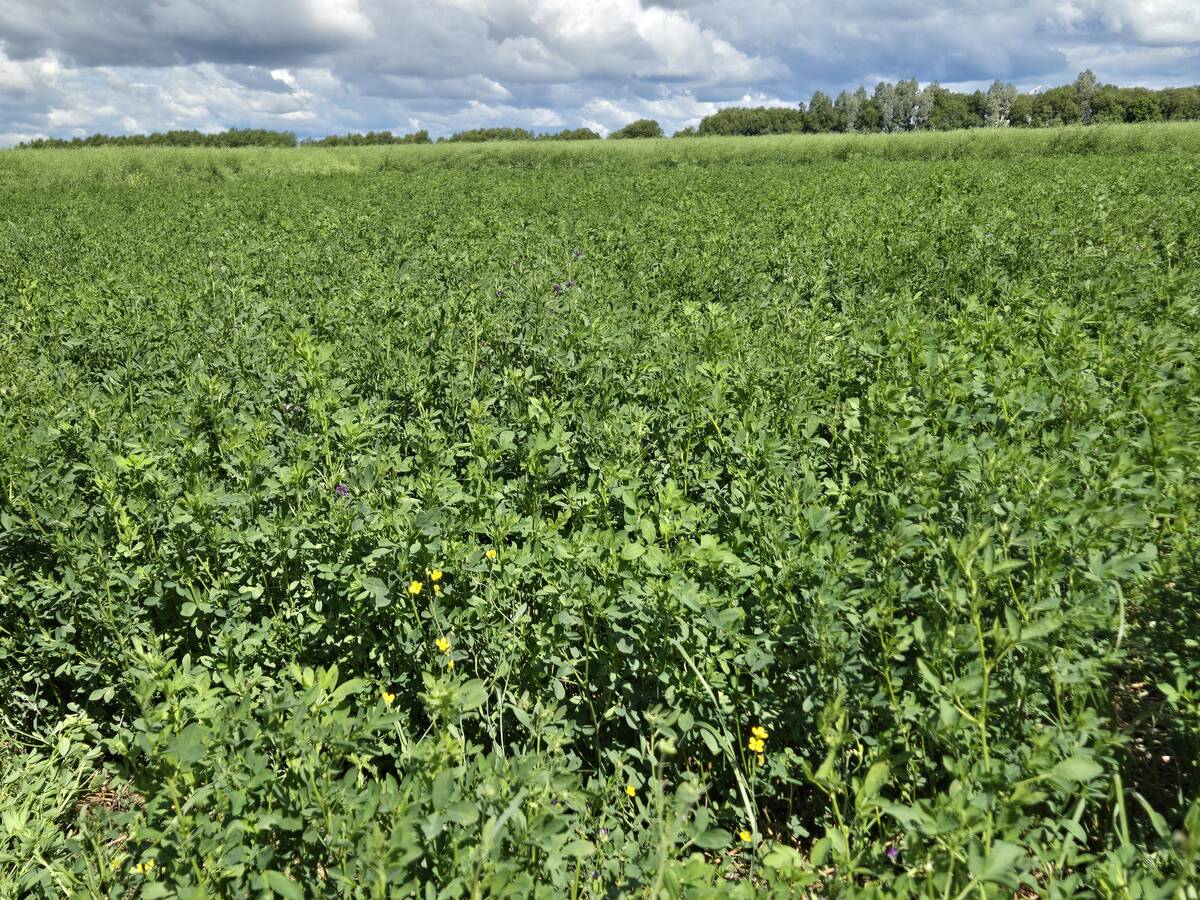CARON, Sask. – Blaine McLeod has advice for farmers who intend to plant barley and pea silage in separate strips rather than as a mixture: be prepared for funny looks from the neighbors.
This spring McLeod and his dairy farm partners – father Bob McLeod and brother-in-law Clint Goetz – planted barley and peas in alternating 12-foot strips using two 12-foot International press drills.
While pleased with the results, McLeod said the difference in germination sparked considerable discussion on coffee row.
“We had the community wondering what we were doing because of course the barley germinated first, and it was all up, and everybody figured we seeded the whole farm with one drill not working,” he said.
Read Also

Manitoba Parkland research station grapples with dry year
Drought conditions in northwestern Manitoba have forced researchers at the Parkland Crop Diversification Foundation to terminate some projects and reseed others.
“We only seeded 120 acres like that, but it was right along the highway so it was very visible.”
The unique field design lasted only a couple of weeks until the peas were tall enough to be noticed.
“It looked pretty bad for awhile,” Goetz admitted.
The 170-cow dairy farm 21 kilometres west of Moose Jaw, traditionally grows barley silage for feed.
McLeod said they tried growing a triticale-pea mixture about 10 years ago but weren’t happy with the results. He said they felt the early-germinating triticale suppressed the peas and reduced yields.
This year, a traveling feed salesperson learned they were considering growing peas again. He told them he’d heard peas and grain grow better if planted separately.
After doing some research, the partners talked to someone at Alberta Agriculture who confirmed the advice and offered some pointers.
Barley and peas
They injected liquid manure into the field in the fall and cultivated for weeds in the spring. Then they seeded Lacombe barley at 11Ú2 bushels to the acre and MP1248 forage variety of Trapper peas at two bushels an acre.
“When we cut it, we just cut cross the field so that we were mixing the silage evenly,” McLeod said.
“We didn’t just cut the barley and then cut a row of peas. We cut across section and it mixed in the bunker silo and made a real good mixture.”
The field yielded six tons of silage an acre. Protein levels tested at 17 percent.
Yields were so high that 9,000 bushels of barley originally intended for silage were put away as feedgrain instead, which will delay grain purchases until Christmas.
More silage was produced than the dairy cows can eat, so the farm recently bought 100 feeder cattle to use the extra feed.
McLeod said this year’s ideal growing weather played a big part in producing what he calls a one-year-in-20 crop, but he thinks the strip-planting method was also a significant factor.
He and Goetz said the method would pay off more in a dry year, when the peas have an even tougher time competing with a cereal crop.
One of the biggest payoffs for McLeod is palatability.
“A lot of nutritionists say a barley-pea silage is less palatable, but we haven’t found that,” he said.
“The cows have never looked back at it.”
The toughest call was when to harvest.
“It was a trade off between too ripe on the barley and not ripe enough the peas.”
University of Saskatchewan researchers advised that harvesting when the barley reached the soft dough stage would provide the optimum protein-energy balance. At this stage, the peas are just starting to pod.
McLeod said they haven’t decided whether to plant this way again next year, but if production results in the dairy barn this winter are satisfactory, he figures they probably will.
“We like to try new things, and this is probably one of the more unique things that we’ve done for quite a while.”
















